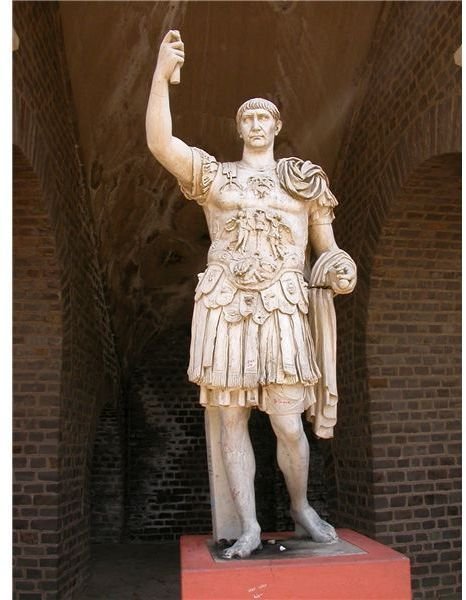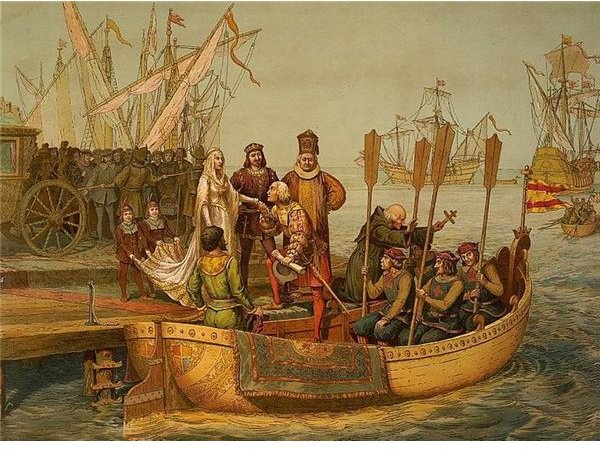Quick Historical Facts About Spain: From Romon Colony to Modern Times
Spain has a very colorful history, from the Spanish colonies in the New World, the Islamic period, the Christian reconquest of Spain and Spanish expansion into the New World and much more. Learn some interesting facts about Spain’s history to get you started in your research project, or just to satisfy your curiousity.

**Roman Spain
**
Time period: Roman efforts to conquer Spain began around 200 B.C. at the end of the Punic Wars. Complete Roman control over the territory was not complete until the reign of Rome’s first Emperor, Augustus. Spain remained until Roman control until about 409 A.D. when Germanic tribes invaded the region.
Territory: The Roman province of Hispania covered most of modern-day Spain and Portugal. During the early Roman era, the territory was divided into two provinces Hispania Citerior (i.e. Near Spain) and Hispania Ulterior (i.e. Far Spain). In the Imperial Roman period, Roman Spain was reorganized into three provinces: Baetica, Lusitania, and Tarraconensis.
Noteworthy leaders: Two Roman Emperors were born in Roman Spain: Trajan (reigned 98 AD to 117 AD) and Hadrian (reigned 117 AD to 138 AD).
Islamic Spain
Time period: 711-1492 A.D. The Islamic period of Spanish history is often further divided into several periods. Many scholars point to the 10th century A.D. as the height of Islamic Spain. In some sources, Islamic Spain is also called Moorish Spain.
Territory: By 720 A.D., Islamic Spain includes most of modern-day Portugal and Spain.
Religious toleration: Unlike later periods of Spanish history, the Islamic government of the territory was widely known for its toleration of Jews and Christians. The peaceful coexistence of several religious groups in a single territory in this era stands in marked contrast to later periods of Spanish history. While this period’s religious toleration was not up to 21st century human rights standards, it was progressive for its time.
The Culture of Cordoba: One of the most culturally significant centers of Islamic Spain was Cordoba, capital city of Umayyad Spain. The region was known for its libraries, hundreds of public baths and other amenities for residents. The scholars and intellectuals based in Cordoba are sometimes credited with bringing knowledge of ancient Greece back to Europe.
Royal Spain
The modern concept of Spain can be traced back to Ferdinand of Aragon and Isabella of Castile’s marriage in 1469. Known as the “Catholic Monarchs,” the Christian reconquest of Spain (known to history as “the Reconquista”) was completed under their leadership in 1492. Long before that period internal rebellions, wars and battles had been a fact of life in Spain however. The newly established Kingdom of Spain sought dynastic marriages with the other European royal families to ensure Spanish stability. Efforts to unify the different parts of Spain proved to be a very difficult challenge. In addition to royal rule, Spain’s rulers emphasized the importance of Catholicism over all else. In 1492, all Jews in Spain were forced to leave the country or convert to Christianity. The fate of Spain’s Muslims was not much better.
Imperial Spain and the New World

Though North America had been discovered and lightly settled by Vikings around 1000 A.D., knowledge of the “New World” was not widespread in Europe at the time of Columbus. When Isabella and Ferdinand funded Christopher Columbus’s expedition in 1492, the results surprised the rest of Europe. Rather than finding a faster route to the lucrative markets of China and the Far East, Columbus found the Americas. The prospect of conquering new territory, learning about the New World, finding gold and silver and other opportunities drew many Spanish soldiers, explorers and others to the New World.
The impact of Spanish imperial conquest in the Americas changed Spain and the Americas forever. Spanish soldiers and others seized vast amounts of gold and silver from Mexico, the Inca and other indigenous groups in the region who were decimated by European diseases such as small pox and measles. Many historians and authors have sought to explain how relatively small numbers of Spanish troops were able to conquer the New World so quickly. While firearms and strategy certainly played a role, diseases killed far more people than bullets and swords. Spanish success in the New World attracted other European powers to the New World. As more and more silver and gold arrived in Spain, the Spanish economy suffered from high levels of inflation.
Resources
There are many resources available to learn more historical facts about Spain. Whether you are looking for historical maps, information on the Muslim period of Spanish period or other aspects of Spanish history, you can find more in these resources.
A Brief History of Moorish Spain, https://www.shsu.edu/~his_ncp/MoorSpan.html
Muslim Spain, https://www.bbc.co.uk/religion/religions/islam/history/spain_1.shtml
Spanish History (University of North Texas), https://fllc.unt.edu/spanish/history.html
Image Credit: Wikimedia Commons/Library of Congress
Image Credit: Wikimedia Commons/Saperaud